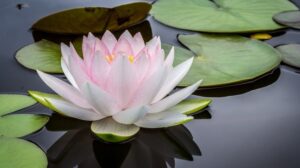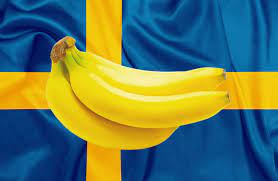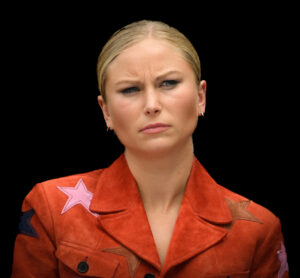Reflecting on our experience on a ship where there were around 300 crew and passengers, before we boarded, we all had a supervised RAT (Rapid Antigen Test) in Vietnam, as I previously reported. Everyone initially needed a negative test to be cleared to board, although that requirement has now been abandoned. When one of the crew was detected positive, he or she was isolated and the rest of the crew were masked for the whole time. It was interesting that the only member of the crew who had difficulty maintaining his mask was the maître d’, who bore an uncanny resemblance to Peter Dutton, even down to the abruptness in manner and the stoop. He was Belgian, quite an uncanny resemblance!

But the large “plague boats” are back, with all the protestations that all has changed – or has it? Now, this is the Majestic Princess not the Ruby Princess. Same problem? The Majestic Princess, which berthed recently in Sydney, was carrying 4,000 passengers and crew and about one in seven contracted COVID. Very similar number of infected compared with the Ruby Princess. The cruise information states:
If you opt for the former {RAT}, all you have to do is take a photo of the negative RAT result displayed next to a government-issued photo ID, such as your driver’s licence or passport, as well as a clock showing the time the test was completed. This could be a wall clock, mobile phone screen or a wrist watch. Once you have the photo, make sure you have it stored and ready to show upon request at the terminal.
Prefer a pre-departure PCR test? You’ll receive a text message from the relevant laboratory or health authority and all you have to do is show it on request before you board the ship. Spot checks will be carried out in all cruise terminals across the country. Fail to produce proof of a negative Covid-19 test result and you will have to undertake a RAT before entering the terminal. Test positive and you will be denied boarding.
This “advice” in its laissez-faire form suggests that chances are that probably nobody will bother you, and we accept with a straight face that everyone will be uniform in taking appropriate personal responsibility to have the test. When the Ruby Princess passengers in 2020 were disembarked so surprisingly quickly, my blogs at the time expressed my disbelief at what I believed was an unforgivable breach of public health requirements that had been facilitated by Government, with components of both Federal and NSW State shirking responsibility. It was a time when social isolation, contact tracing and hand hygiene were the only weapons against the pandemic. At that time there was neither vaccine nor test, let alone anti-viral drugs and there was no offical support for mask wearing.
Then, the rules were based around lockdown to facilitate social isolation, hotel quarantine and international and state border closures. These no longer apply since the Premier highjacked the public health agenda for advocacy of personal responsibility. It is no longer mandatory for NSW residents who test positive for COVID-19 to self-isolate. However, NSW Health strongly recommends those who are sick or who have tested positive to stay home until their symptoms end and do not visit people in aged care, disability care or hospital for at least seven days. The Chief Health Officer appears occasionally to exhort, but effectively she is muzzled.
Quarantine is unequivocally a Federal responsibility but the then Prime Minister Morrison, in his normal response to anything difficult, took the route of “divide and rule”, which meant that a chance to have a uniform national policy was lost.
Now the cruise liners are back, and despite the community having better tools to combat the Virus, these Carnival Cruises seem not to have learnt anything much. There they were, the ambulances today lined up to take away the sickest (two identified), and the others were packed off home with masks and a recommendation that they isolate themselves and avoid public transport. There seemed no consideration as to how these persons were actually going to get home. In fact, it is reported that the infected mingled with the non-infected as they disembarked. As someone commented, good time to avoid the trains north. Now where were the public health and quarantine officers to supervise the disembarkation. Once one goes down the gangplank most cruise companies divest themselves of all responsibility. The terminology is somewhat cloying as “passengers” have become ship “guests”.
Putting this disaster into perspective, NSW reported 19,800 new COVID-19 cases last week. Question is, at what order of magnitude would we find the real number since positive RATs are no longer reported – 10, 20, 50, 100, 500?
The unofficial Government apologist, Deakin University Epidemiology Chair, Professor Catherine Bennett, said it was likely that only a fraction of the 800 cruise cases would have been detected had they been onshore, dismissing any notion the outbreak will have an impact on the State’s case numbers. In other words, she was saying that 19,800 was an underestimate, as contact tracing and positive case reporting have long gone. But fearlessly she did place an estimate: “We are probably only counting 10 per cent of cases at the moment,” Bennett said. “Not only that, but the ones we are really unlikely to be testing are those asymptomatic and mildly symptomatic cases”. An immediate comment. How does she come to a figure of 10 per cent, which suggests that there were 200,000 cases last week in NSW? Further, mild and asymptomatic cases can lead to long COVID; no infection is trivial!
“These cases [on the ship] have been detected through mandatory testing, and now they are being masked up and told to be careful. This is a known, small risk in a sea of the largely unknown.” If you read the conditions, it is difficult to claim it is mandatory if you do not police it. Were they sure that nobody was harbouring the Virus when they boarded – the Virus does need a vector – and it seems no attempt is made to try and work out that problem. The ship was going to be deep cleaned, whatever that means in terms of its effect on numbers. Presumably the ship was “deep cleaned” before the recent trip – problem is, are the passengers and crew deep cleaned as well?
Then another expert weighed in. Associate Professor James Trauer, a respiratory consultant physician who is the Head of Epidemiological Modelling in Monash University’s School of Public Health and Preventative Medicine, agreed with her.
“I don’t think it’s anything to panic about for the rest of Sydney … it will be a drop in the ocean, really,” he said.

He then goes on to counter the “ocean drop” argument by saying “the main concern would be if those on the cruise, who are generally older, go on to visit vulnerable people, such as aged care residents, while infectious.” But mate, they should be at home until they are COVID-negative, and by the way was everyone on the cruise given COVID testing kits when they left the ship?
These comments were drawn by the SMH from two academic bystanders – from interstate. Why them? Where was the NSW government response? Where are you, Dr Chant?
Who is Reprehensible, Gentlemen?
The Cipher Bureau was shuttered in 1929, shortly after the arrival of Henry Stimson as the new (US) Secretary of State. Apparently, Stimson thought this type of surveillance was unethical, and he issued what is perhaps one of the best foreign policy statements ever:
“Gentlemen do not read each other’s mail.”
I thought of the above when Australia was recently consumed with indignation with the Optus followed by Medibank hacks. How dare they?
Russia has shown that it can invade Australia without putting a foot in the country. We constantly expose ourselves to retaliation from those who see us as a small bellicose nation that will go to war now at the drop of an American Flag – where once waving the Union Jack elicited a similar knee jerk response.
Sure, Putin is an evil bastard, but he knows what he knows and that is fighting dirty. He poisons his opponents; he has strangled the opposition, but he has developed a cyber apparatus which has shown Australia to be full of hicks. Just as the Japanese, with their sophisticated Zeros, that shot down the aged Australian Wirraways over Darwin in 1942 had emphasised our technological lag. How dare they have superior technology without telling us, protested the Colonel Blimps over their Scotch and water.
Again, we find Australia has been flailing around. I would suggest respectfully that it is equally reprehensible that the management of these companies is not investing in the appropriate defences to combat an attack from these Russian legions. The Russians are doing what is their job, however distasteful. The idea that we are going to expose them, pursue them and bring them to justice is certainly a challenge for a Federal Police Force, which has never shown itself to have the capacity in so many fields, in so many instances. What are they going to do now in response? Bomb the Kremlin. Shirtfront Putin. What does “we shall hack the hackers” actually mean?
 The hackers may systematically try to hack each health fund in turn; perhaps also Medicare. This obsessive Government needs to keep identified information from being vulnerable and raises the question of whether we need such a vast amount of identified information.
The hackers may systematically try to hack each health fund in turn; perhaps also Medicare. This obsessive Government needs to keep identified information from being vulnerable and raises the question of whether we need such a vast amount of identified information.
What is more dangerous is if de-identified information is thrown away in this affronted panic. Such information is vital for understanding the health of the population – if anybody cared for such evidence-based facts over their opinionated biases and conspiracy theories, which have characterised the Plague Years, if not before.
But then our governments always have difficultly distinguishing between baby and bath water.
Where is the John?
- An alert from The Washington Post:
A new powerhouse is emerging in the U.S. Senate — but this one has nothing to do with politics.

In January, exactly 10 percent of all U.S. senators — ahem, 10 out of 100 — will be named John or Jon. Sen-elect John Fetterman (D-Pa.) will be the latest addition to the John/Jon phenomenon, which was noted on Wednesday by Grace Segers, who covers Congress and politics for the New Republic journal.
It doesn’t help that 11 members of the House are also named John. The Senate’s John/Jon ranks include members of both parties. Even though it is a common name for American men, it is still overrepresented among the senators.
Come January, the number of Johns and Jons in the Senate will surpass the current number of Hispanic and Black senators. In the last century, fewer than 5 per cent of babies have been named John, according to the Social Security Administration. Census data from 2020 shows that Latinos make up nearly 19 percent of the population and Black people about 12 percent.
The Social Security Administration tracked the most popular names for births in the last 100 years. John was ranked No. 3 with more than 4.4 million babies given the name, behind James and Robert.
Ian Hamilton. Who?

Ian Hamilton died on October 3 this year. I read about his death in The Economist. He was 97. He was a different hacker from those above, but his hacking of the Stone of Scone prompted outrage in the British Press at the time causing even the English border with Scotland to be closed. Hamilton was the ringleader in a band of young Scottish Nationalists who hacked the Stone of Scone from its place in Westminster Abbey – and took it back to Scotland. I remember reading about it in 1950 as a ten year old. In the affronted accounts of the robbery, the stone hackers were accused of treason.
The Economist obituarian sets the scene (sic): As treasures went, this one was no beauty. It was an oblong block of red sandstone, 26 inches long by 16.7 wide by 10.5 deep, rough-hewn and chisel-pocked. One face was incised with a crude cross, and two iron rings on chains were set into the ends. By young Ian Hamilton’s estimate—for he had borrowed book after book on it from the Mitchell Library in Glasgow, where he was studying law at the university—it weighed four hundredweight: in fact it weighed 336lb, or 152 kilos. It was also crammed tightly under the ancient wooden coronation chair of the kings and queens of England in Westminster Abbey. All this made it difficult to abscond with. But that was what he meant to do.
It took a number of attempts to hack the stone from its resting place during which time the Stone broke in two. The Stone had been ripped from its place in Scone Abbey in 1296 by Edward 1 and although there was a promise to return it, nothing was done and the Stone remained under the Coronation Chair. According to Scottish Nationalists like Hamilton the stone should have long since been returned.
Led by Ian Hamilton, then a young Scottish law student at the University of Glasgow, with three other fellow law students he took the Stone from Westminster Abbey on Christmas Eve 1950. The Stone broke in two, and they hid the pieces before taking them to the ruined Abbey of Arbroath, where they lifted them onto the altar, covered the pieces with the Scottish flag and left them there.
After four months, the Stone was discovered and the two pieces were joined together and then returned to Westminster Abbey. Hamilton and his crew were prosecuted but then withdrawn. Eventually the Stone was returned to Scotland in 1996, with the proviso that it be returned for any coronation of a British monarch.
In many ways, this act – symbolic of his Scottish nationalism – was what he was always associated with in life; and now remembered in his obituary. His career as a lawyer brought a certain further notoriety. What he did, in the words of the obituary writer: [In] 1953 he was already famous as a second petitioner in a landmark case, MacCormick v Lord Advocate, over whether Queen Elizabeth II should be plain “Queen Elizabeth” in Scotland. The first Elizabeth, after all, had never ruled there”. He lost the case but nevertheless exposed deficiencies in the Act of Union of 1707.

A film was made of the exploit; he was known as “the Stone Man”; he was revered by the Scottish Nationalist Party although he was never elected to parliamentary office. The Economist rarely if ever publishes an obituary about insubstantial figures even if, in the vast majority of cases, nobody outside has heard of the Stone of Scone – “no it’s ‘scoon’ you heathen!”
The Economist did not get it wrong this time either. Ian was quite a hacker!
Mouse Whisper
Monaco has three national animals – wood mouse being one of them. The other are the hedgehog and the rabbit. I suppose that they are the appropriate size to fit into such a micro-country. But where is the wood in Monaco? There are ten parks and gardens in Monaco, although I doubt whether these omnivore relatives of mine would be welcome in some of them, even though they do wear the national insignia – red and white. Beware, the Monaco and Indonesian flags are very much the same, although some would say, the Indonesian flag is more a scarlet red than that of Monaco.
As a piece of associated trivia did you know that at the 1936 Olympic Games, Haiti and Liechtenstein paraded with same flag? These have since been modified to create what is now a marked difference. Incidentally, Haiti’s only athlete in 1936 pulled out with injury, and the Liechtenstein team came nowhere in athletics, road racing and shooting.
Liechtenstein has in fact won 10 Olympic medals in Alpine skiing; none in the summer Olympics; whereas Haiti has won two – a bronze in 1924 for shooting and a silver in 1928 in the men’s long jump. During this time, Haiti coincidentally was occupied by the American military.
Chubby, my Haitian twisted tooth mouse, once told me all about the mix up with the flags, confirmed by my other Liechtenstein relative, Saffron, the yellow necked mouse – and you know when we mice get together, we do talk about the “miceties” of life.





 Jane Fonda remains on the Vietnamese screens in the garb of the anti-War heroine who visited Vietnam and was photographed behind a weapon designed to shoot down American planes. Never mind, that the installation was there to protect Ha Noi from the destruction being wrought by American aircraft – Ha Noi was carpet bombed, certain sections of Americans who were traumatised by the War exercise their God-given right to abuse her, even spit on her face with tobacco juice. She has apologised for her Ha Noi appearance, said she was sorry…
Jane Fonda remains on the Vietnamese screens in the garb of the anti-War heroine who visited Vietnam and was photographed behind a weapon designed to shoot down American planes. Never mind, that the installation was there to protect Ha Noi from the destruction being wrought by American aircraft – Ha Noi was carpet bombed, certain sections of Americans who were traumatised by the War exercise their God-given right to abuse her, even spit on her face with tobacco juice. She has apologised for her Ha Noi appearance, said she was sorry… Hayek, all in one sentence – authoritarian, paternalistic, elitist. His book is an attack on democracy cloaked in academic jargon, I thought at the time, as I rolled over and watched the drifting birds. He offered no structure to replace democracy. Yet it took time to show neoliberalism to be an illusion, reaching its apogee in Donald Trump. In the meantime, be “vewy, vewy, vewy” afraid since Elmer Fudd is “vewy, vewy, vewy” likely to run for President in 2024.
Hayek, all in one sentence – authoritarian, paternalistic, elitist. His book is an attack on democracy cloaked in academic jargon, I thought at the time, as I rolled over and watched the drifting birds. He offered no structure to replace democracy. Yet it took time to show neoliberalism to be an illusion, reaching its apogee in Donald Trump. In the meantime, be “vewy, vewy, vewy” afraid since Elmer Fudd is “vewy, vewy, vewy” likely to run for President in 2024. There we were on the South China Sea, and since the sea was a little rough, and balance is already a problem, I started to do some channel surfing. And there it was, unexpectedly, the 2022 Melbourne Cup being shown in real time. What other horse race would be shown on a French ship in Vietnamese waters. Not an Everest; nor a Kosciusko; not even a Wycheproof. Despite the huge amount of money which this guy V’landys seems to be able to fling on horse races for the benefit of Arab sheikhs and other deserving racing nobility, such as Lloyd Williams and the Waterhouses and their ilk. V’landys has, as far as I know, not arranged for his wonderful collection of highland flings to be shown in the South China Sea. And do not I think he would care a damn if they were ever shown – probably not.
There we were on the South China Sea, and since the sea was a little rough, and balance is already a problem, I started to do some channel surfing. And there it was, unexpectedly, the 2022 Melbourne Cup being shown in real time. What other horse race would be shown on a French ship in Vietnamese waters. Not an Everest; nor a Kosciusko; not even a Wycheproof. Despite the huge amount of money which this guy V’landys seems to be able to fling on horse races for the benefit of Arab sheikhs and other deserving racing nobility, such as Lloyd Williams and the Waterhouses and their ilk. V’landys has, as far as I know, not arranged for his wonderful collection of highland flings to be shown in the South China Sea. And do not I think he would care a damn if they were ever shown – probably not. After a tumultuous summer during which his company temporarily lost its liquor and entertainment licenses after fights broke out at the venue and on the Block Island Ferry, Ballard’s Beach Resort owner Steven Filippi may have lost his unopposed bid for a town council seat.
After a tumultuous summer during which his company temporarily lost its liquor and entertainment licenses after fights broke out at the venue and on the Block Island Ferry, Ballard’s Beach Resort owner Steven Filippi may have lost his unopposed bid for a town council seat.




 It is somewhat surprising when you drive past what appears to be an empty shop next to an unprepossessing house to see it surrounded by a high metal fence and bristling with a substantial array of power lines and CCTV cameras. There are other buildings on the property, including a large shed at the rear, and any windows seem to have the blinds down. There are limbs of animals hanging from trees dotting the property. A warning?
It is somewhat surprising when you drive past what appears to be an empty shop next to an unprepossessing house to see it surrounded by a high metal fence and bristling with a substantial array of power lines and CCTV cameras. There are other buildings on the property, including a large shed at the rear, and any windows seem to have the blinds down. There are limbs of animals hanging from trees dotting the property. A warning?











 Whoever wins will be faced with having to govern, unlike what has happened over the past decade. This was the time of the lotus land; when the rich became richer and the dispossessed were harassed by false gods and more and more were caught in the culture of poverty.
Whoever wins will be faced with having to govern, unlike what has happened over the past decade. This was the time of the lotus land; when the rich became richer and the dispossessed were harassed by false gods and more and more were caught in the culture of poverty.
 Last week, we were driving into the Northland town of Kerikeri, when we saw an orchard named Persimmon Patch. I had never been into a persimmon orchard, even though I had worked around the fruit growing areas of Victoria, where I would have expected to find them growing, if not in a dedicated orchard. I had once seen a persimmon tree growing in a suburban garden in Melbourne bearing fruit. Not much comparison.
Last week, we were driving into the Northland town of Kerikeri, when we saw an orchard named Persimmon Patch. I had never been into a persimmon orchard, even though I had worked around the fruit growing areas of Victoria, where I would have expected to find them growing, if not in a dedicated orchard. I had once seen a persimmon tree growing in a suburban garden in Melbourne bearing fruit. Not much comparison.
 No one should be surprised that the “big lie” has become gospel in White evangelical churches. The New York Times reports: “In the 17 months since the presidential election, pastors at these churches have preached about fraudulent votes and vague claims of election meddling. … For these church leaders, Mr. Trump’s narrative of the 2020 election has become a prominent strain in an apocalyptic vision of the left running amok.”
No one should be surprised that the “big lie” has become gospel in White evangelical churches. The New York Times reports: “In the 17 months since the presidential election, pastors at these churches have preached about fraudulent votes and vague claims of election meddling. … For these church leaders, Mr. Trump’s narrative of the 2020 election has become a prominent strain in an apocalyptic vision of the left running amok.”



 I managed to find one small bark Wandjina for sale in Kununurra, which I gave to my elder son. Since then, my wife and I have acquired several Wandjina painted by the Karedada sisters – Lily and Rosie (the Karedadas were the family with the responsibility at that time for painting Wandjina); a small bark painting by Waigan and one where the provenance was unknown as it was created in the mid-1960s when such bark representations of the Wandjina were new. Most of these bark images came from the Aboriginal people living at Kalumburu, a settlement on Mission Bay about 230 kilometres north of the Gibb River Road turnoff in Western Australia. Here the Spanish Benedictines had established a mission in the early part of the twentieth century. One of my teachers had said that during WWII, when he was in the Australian navy, he had been stranded there. The priests only spoke Spanish and he not; therefore, they communicated in Latin. No mention in any of his anecdotes of contact with the Indigenous people; such were the times.
I managed to find one small bark Wandjina for sale in Kununurra, which I gave to my elder son. Since then, my wife and I have acquired several Wandjina painted by the Karedada sisters – Lily and Rosie (the Karedadas were the family with the responsibility at that time for painting Wandjina); a small bark painting by Waigan and one where the provenance was unknown as it was created in the mid-1960s when such bark representations of the Wandjina were new. Most of these bark images came from the Aboriginal people living at Kalumburu, a settlement on Mission Bay about 230 kilometres north of the Gibb River Road turnoff in Western Australia. Here the Spanish Benedictines had established a mission in the early part of the twentieth century. One of my teachers had said that during WWII, when he was in the Australian navy, he had been stranded there. The priests only spoke Spanish and he not; therefore, they communicated in Latin. No mention in any of his anecdotes of contact with the Indigenous people; such were the times.






 The wasabi that comes in tubes and packets and is familiar to many diners is actually a blend of wasabi and horseradish dyed green — or contains no wasabi at all. In Japan, chefs at higher-end sushi, soba or grilled beef restaurants grate fresh wasabi at the counter, so customers can experience the acute assault on their nostrils and the unique flavour that lingers for just a moment on the tongue.
The wasabi that comes in tubes and packets and is familiar to many diners is actually a blend of wasabi and horseradish dyed green — or contains no wasabi at all. In Japan, chefs at higher-end sushi, soba or grilled beef restaurants grate fresh wasabi at the counter, so customers can experience the acute assault on their nostrils and the unique flavour that lingers for just a moment on the tongue. Now, as that wizard green fingered jardineira, Vicki Sheedy, says dismissively, horseradish is a weed. You have to grow it in a pot and not let it get control of the vegetable patch.
Now, as that wizard green fingered jardineira, Vicki Sheedy, says dismissively, horseradish is a weed. You have to grow it in a pot and not let it get control of the vegetable patch.
 In the 1840s my mother’s family came to Australia from Katowice, which is a major Polish town today but was then Prussia. They settled first in the Barossa Valley but with a shortage of land available there, they walked with their wagons, from South Australia to settle in southern NSW. My maternal mother was a Schröeter. My mother would have been a wonderful subject for “Who do you think you are?”
In the 1840s my mother’s family came to Australia from Katowice, which is a major Polish town today but was then Prussia. They settled first in the Barossa Valley but with a shortage of land available there, they walked with their wagons, from South Australia to settle in southern NSW. My maternal mother was a Schröeter. My mother would have been a wonderful subject for “Who do you think you are?” As of Monday afternoon here, the Russian Olympic Committee team had won 18 medals, the second-highest total behind Norway. But maybe there should be a new category for its medals? “Provisionally won?”, “Won … for now?” “Won, pending further info?”
As of Monday afternoon here, the Russian Olympic Committee team had won 18 medals, the second-highest total behind Norway. But maybe there should be a new category for its medals? “Provisionally won?”, “Won … for now?” “Won, pending further info?”





 Morrison has cultivated the image of the family man who consults his wife, and treasures his children, Albanese is a divorced man with a tearaway son, Nathan. He was married to a fellow politician.
Morrison has cultivated the image of the family man who consults his wife, and treasures his children, Albanese is a divorced man with a tearaway son, Nathan. He was married to a fellow politician.







 My memory of this time was jogged by the Boulia Shire sign, which appears in the opening credits of the ABC’s Backroads program. Not that I watch this very popular program much. I, like the ABC presenters, have visited many of the places they have gone to see, and they have their own perspective.
My memory of this time was jogged by the Boulia Shire sign, which appears in the opening credits of the ABC’s Backroads program. Not that I watch this very popular program much. I, like the ABC presenters, have visited many of the places they have gone to see, and they have their own perspective.


 This excerpt from the New York Times this week says it all – at least for me. I have become sick and tired of politicians with little scientific knowledge and without any understanding of science – let alone public health – pontificating, when they are way out of their depth. The default position for ignorance is “personal responsibility”.
This excerpt from the New York Times this week says it all – at least for me. I have become sick and tired of politicians with little scientific knowledge and without any understanding of science – let alone public health – pontificating, when they are way out of their depth. The default position for ignorance is “personal responsibility”.





